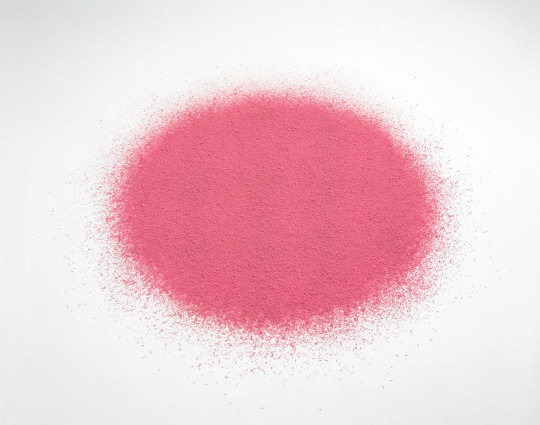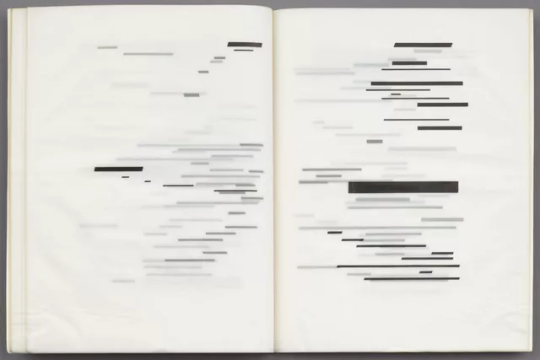Text
Sources (Hover Over to View)
Tom Friedman Archive: https://www.tomfriedmanartist.com/work/dates/1990#43
Tom Friedman Interview: https://www.thebeliever.net/logger/an-interview-with-tom-friedman/
Rauschenberg/de-Kooning: https://www.artsy.net/article/artsy-editorial-robert-rauschenberg-erased-de-kooning
Broodthaers MoMA: https://www.moma.org/collection/works/146983#:~:text=throw%20of%20the%20dice%20will%20never%20abolish%20chance.
Broodthaers Perez Art: https://www.pamm.org/en/artwork/2016.210
Portrait of Ross: https://www.queerarthistory.com/love-between-men/untitled-portrait-of-ross-in-l-a/
Adrian Piper: https://www.canvasjournal.ca/read/transcending-common-understandings-of-conceptual-art-an-analysis-of-adrian-pipers-what-will-become-of-me-1985-ongoing
Adrian Piper MoMA Staff Pick: https://www.moma.org/slideshows/593/6046
0 notes
Text

Untitled
Tom Friedman, 1990
Eraser Shavings, 36" Diameter
Friedman engages with the softer elements of an eraser’s makeup in Untitled, taking the everyday object and breaking it down into the finest, nearly atomic version of itself. In a creative process he classifies as a ritual, of sorts, Friedman often focuses on bringing the object with which he’s working back to the essence of itself. With the eraser, he began by taking the item and rhythmically “erasing it” against a wooden board, repeating the process over and over again until the object itself was erased to completion. Then, he proceeded to arrange the product onto a pristine, white floor, sprinkling the shavings in a circular shape. The lighting and placement of the final product showcases the now-fluffy, powdery texture of the eraser after it has undergone a methodical transformation process. Although the only material he uses to create the piece is a common eraser, the final image produced by this laborious–and even boring–routine appears oddly ethereal and cloud-like, as though enticing the viewer to reach out and touch the work for themselves. Friedman has compiled this work on his website alongside other pieces that he labels “Detritus,” featuring dust balls, apple cores, batteries, and other “debris” related products that he has made central to his art.
0 notes
Text

Erased de Kooning Drawing
Robert Rauschenberg, 1953
Minor ink and crayon traces on paper in a gold-leaf frame, 48.3 x 35.9 cm
For many artists who were in the same circles as one another, exchanging artworks was not an unusual occurrence. However, asking to erase the pieces one received from a friend or colleague was another thing entirely. Rauschenberg’s Erased de Kooning Drawing is a product of one such request, made more absurd by the fact that Willem de Kooning was one of the most acclaimed modern artists in New York at the time. According to Rauschenberg, de Kooning deliberately settled on giving him a sketch that he would “miss,” and once the exchange was made, Rauschenberg spent two months trying to erase every trace of the drawing. While some smudges of the original work can still be seen on the page, Rauschenberg effectively eradicated de Kooning’s presence, to the point where no one can decipher its initial form without the aid of modern technology. With some advice from his acquaintance Jasper Johns, Rauschenberg decided to frame the page and label it using a duplication machine before it finally went up for show. Yet, that lingering curiosity left behind by small traces and the inscription of de Kooning’s name still invites one to imagine what exactly exists beneath Rauschenberg's efforts of erasure.
0 notes
Text

Un coup de dés jamais n'abolira le hasard (A throw of the dice will never abolish chance)
Marcel Broodthaers, 1969
Softcover book with mechanographic printing, 32.5 × 25 cm
Broodthaers considered Stéphane Mallarmé a champion of modern art and a liberator of language, and despite the dark, harsh blocking noticeable in this piece, Un Coup de dés jamais n’abolira le hasard is undoubtedly a homage to the French poet and his initial literary work of the same name. Having transitioned from writing poetry to creating visual art in the 1960s, Broodthaers symbolizes his own artistic undertaking by physically transforming Mallarmé’s poem into a work that relies solely on its physical structure, rather than the actual words itself. He used only black bars to cover the lines, keeping them the same length and size as they appeared in Mallarmé’s poem in order to highlight how the work played with typeface and open space on the page. Due to the translucence of the pages themselves, it is possible to view other pages behind the primary spread on display, providing viewers with unique visuals of how space is used from one section to the next. On the title page, Broodthaers simply replaced the word Poème with Image, once again reflecting his own decision to move into visual art, all while still holding true to the work and methods of a man who equally inspired him. Although he is overlapping the initial poem with his own artistic process, Broodthaers “destroys” the precedent of Un Coup de dés jamais n’abolira le hasard while still solidifying its format as the foundational element of his piece.
1 note
·
View note
Text

What Will Become of Me?
Adrian Piper, 1985-ongoing
Framed text, glass jars, shelf, hair, fingernails, skin. Dimensions varied
The continuous process of expanding this work comes at the price of the artist’s own aging body. Adrien Piper is fully aware of this reality and intends to see it through–represented by the framed declaration that, upon her death, her cremated remains will join the shelf of hair, fingernails, and skin that she has gradually gathered into jars at the Museum of Modern Art. Her samples are kept in clear honey jars, repurposed from keepers of sweet, natural sustenance into a transparent tracker of the life cycle, gradually revealing how her hair slowly recedes from black to gray. While the content of this work is fraught with existentialism, there is also a calm beauty in the predictable process of the human condition and what the future indefinitely holds for both artist and viewer. The mere existence of the installation is a reflection: a chance to be conscious of life, the subsequent erosion of it over time, and the opportunity to live on regardless of that truth. What Will Become of Me? identifies the artistic process as an internal procedure, a constant act of performance art that does not end, even with the promise of a shared conclusion for all of natural creation.
0 notes
Text

"Untitled" (Portrait of Ross in L.A.)
Félix González-Torres, 1991
Vibrantly colored candies in individual wrappers, (ideally) 175 pounds when installed
In a collective series of works, made up of individually-wrapped candies, Untitled (“Portrait of Ross in L.A.”) can be formatted on the floor of a given exhibit in myriad ways: standing up in a corner, laid out into basic shapes on the ground, or arranged in other types of piles. The only dimension that stays the same across all these versions, however, is the suggested total weight of the candies: approximately 175 pounds, or the average weight of an adult man–to be appropriately replenished by the curators as needed. González-Torres is resolute in the otherwise freeform arrangement of the piece, in what he called a “refusal to make a static form.” In dedication to his lover who died from AIDS, Ross Laycock, the piece embodies queer identity, love, and loss. The high-spirited, enticing colors of each candy replicates the loudness of that passion and the depth of that loss as it depletes, taken and carried on by the visitors who engage with the installation. While deterioration quietly hovers over the work, the freeness of its physical form and the restoration of the candies’ weight over time emphasizes the beautiful life that still exists in powerful grief.
3 notes
·
View notes